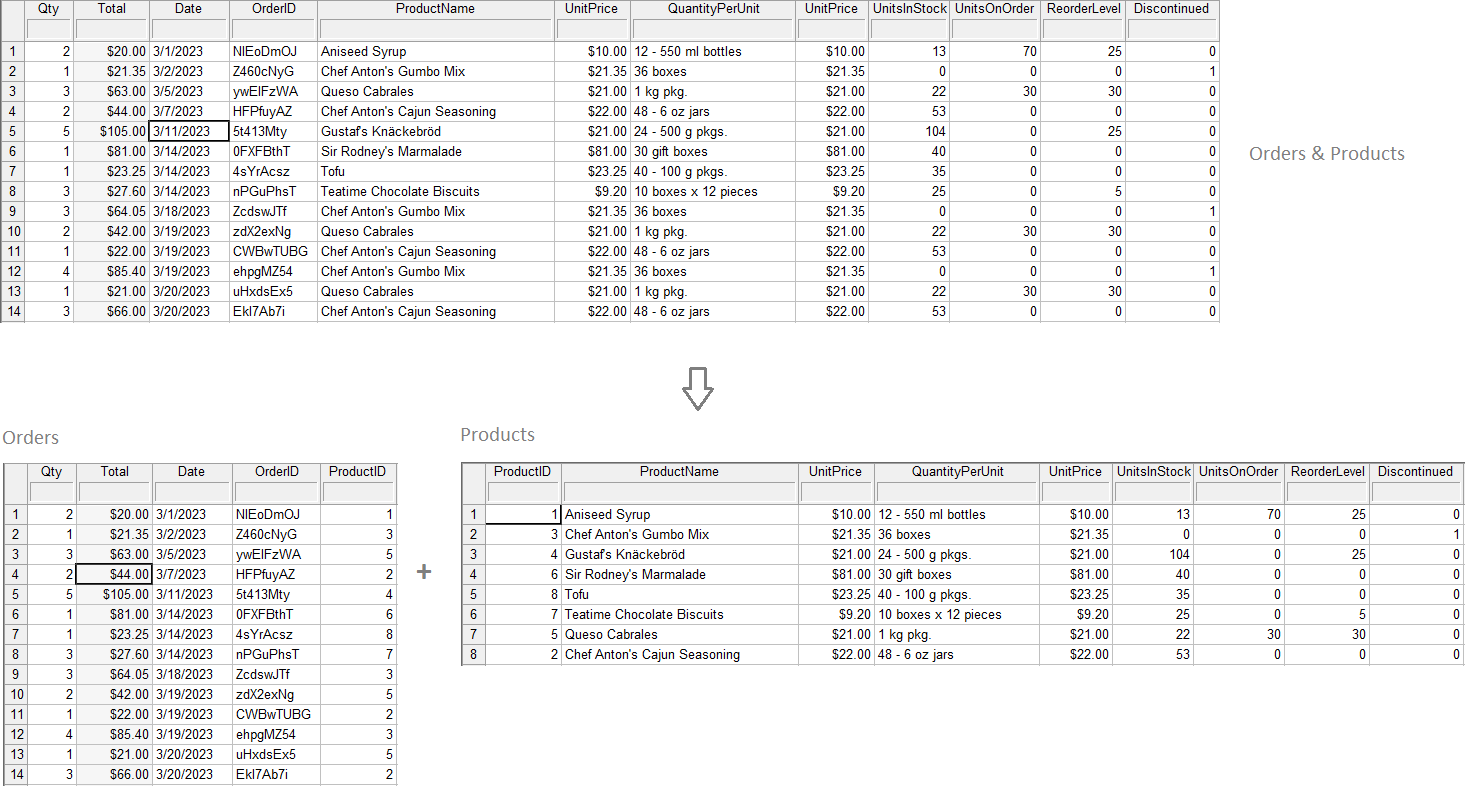To perform table joins and the opposite operations (table splitting) use the Tools > Join (...)
commands.
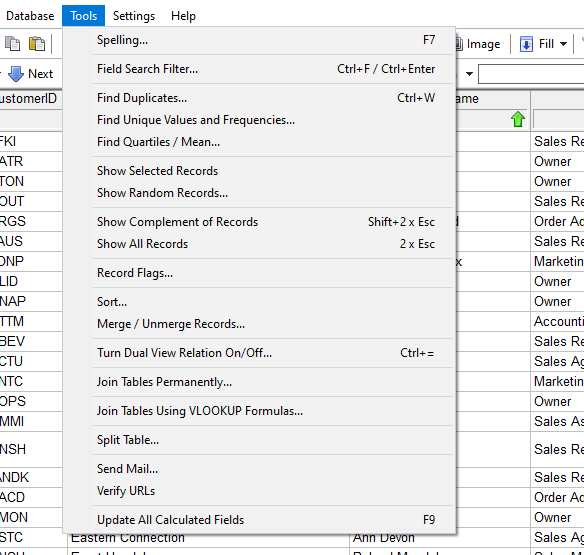
You can create joins both permanently or dynamically (based on the fast binary vlookup calculation fields)
with single clicks, without entering any formulas.
In the "Join Tabels Permanently" dialog box you can now choose which fields should be merged
and whether there should be inserted at the current column/field position:
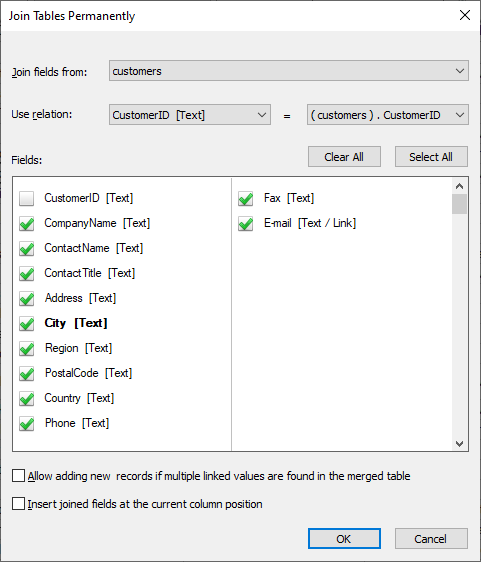
In the "Join Tabels Using VLOOKUP formulas" dialog box you can choose which calculation fields
should be added to the current table to perform lookups in the dynamically "joined" table(s).
You no longer have to manually enter long formulas in these calculation fields. No matter how many
lookup fields are added or how many tables are joined, everything is done automatically.
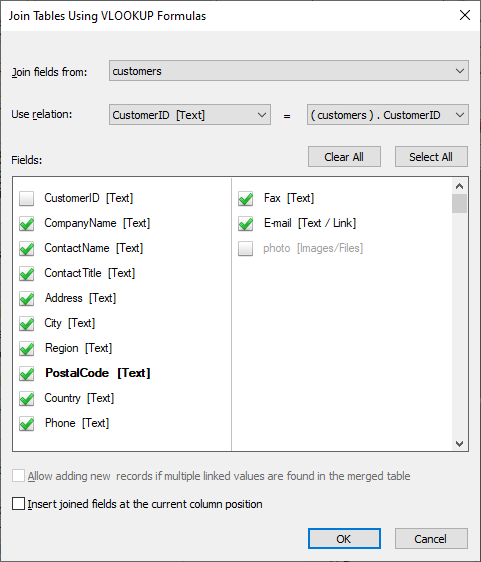
You can automatically split a table where the same group of fields occur in multiple records.
In general, this is the opposite of the above "join" actions.
For example, if the sample "orders" table include many orders of the same group of products
and each "order" record include the full specification of a given product, potentially duplicating
these specifications, that "orders" table can be split to include only e.g., the order date and amount
fields and the list of unique product specifications will be kept in the newly created "products" table.
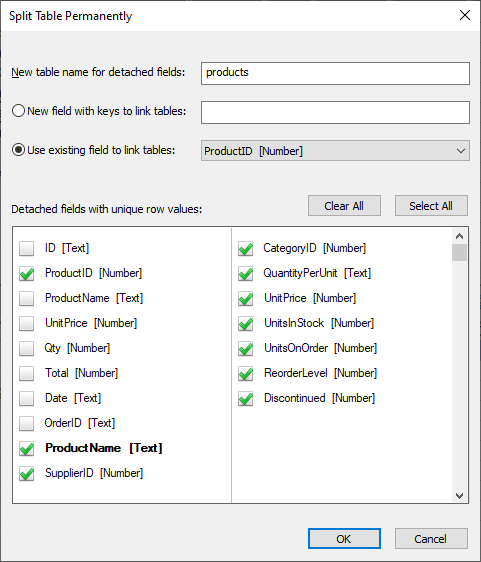
This may often result in much smaller database files and memory usage and make editing product
descriptions easier. For any reporting purposes with a few clicks you can add selected product
description fields back either permanently or as calculation fields with fast vlookups.
For example, to transform a single large table containing both the order and repeated product details,
you just need to specify in the above dialog box a new table name (e.g. "Products"), a link field name
(e.g. "ProductID"), deselect the order fields and GS-Base will automatically modify the original table
and add a new "Products" table:
